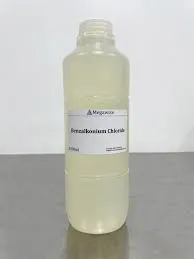cross linked polyacrylamide
Cross-Linked Polyacrylamide Structure, Applications, and Future Perspectives
Cross-linked polyacrylamide (CLPA) is a synthetic polymer that has garnered significant attention in various fields due to its versatile properties and functionalities. Formed by the polymerization of acrylamide monomers in the presence of a cross-linking agent, CLPA exhibits unique characteristics that make it suitable for a wide range of applications, particularly in the fields of water treatment, biomedicine, and material science.
Structure and Properties
The structure of cross-linked polyacrylamide consists of long chains of polyacrylamide monomers that are interlinked through covalent bonds created by the cross-linking agent, typically bis-acrylamide. This three-dimensional network structure provides CLPA with enhanced mechanical strength, thermal stability, and resistance to solvent degradation. Furthermore, the degree of cross-linking can be modified during the synthesis process, allowing for the tuning of physical properties such as swelling behavior, porosity, and rigidity.
One of the distinctive features of CLPA is its ability to absorb large amounts of water, a property that is leveraged in various applications. When in contact with water, the polymer can swell significantly, forming a gel-like substance. This hydrophilic nature of CLPA makes it particularly useful in applications where water retention and release are critical.
Applications
The versatile properties of cross-linked polyacrylamide find use in several key areas
1. Water Treatment CLPA is widely employed in wastewater treatment as a flocculant and coagulant agent. Its ability to bind with fine particles aids in the removal of impurities from water, leading to clearer and safer effluent. Additionally, its gel-like structure helps in the efficient encapsulation of contaminants.
cross linked polyacrylamide

2. Biomedical Applications In the medical field, CLPA serves as a key material in drug delivery systems and tissue engineering. Its porous structure allows for the controlled release of therapeutic agents, whereas its biocompatibility makes it suitable for use in medical implants and scaffolds. Researchers are exploring the potential of using CLPA in hydrogels for wound healing and regenerative medicine.
3. Agriculture Cross-linked polyacrylamide is also utilized in agriculture to improve soil moisture retention. By incorporating CLPA into the soil, farmers can enhance water availability for crops, thereby promoting healthier plant growth and reducing irrigation needs.
4. Materials Science The incorporation of CLPA into composite materials has opened new avenues for developing high-performance materials with desirable mechanical properties. Its use in polymer blends and coatings enhances durability and resilience against environmental conditions.
Future Perspectives
As the demand for sustainable and efficient materials continues to rise, the future of cross-linked polyacrylamide looks promising. Ongoing research is focused on optimizing its performance, improving synthesis techniques, and exploring new applications. The development of bio-based sources for its production is an exciting area, potentially leading to more environmentally friendly alternatives.
Moreover, as scientists explore nanotechnology and smart materials, the integration of CLPA with nanoscale components could result in advanced materials with tailored functionalities suitable for complex applications. The potential for biodegradable variants of CLPA is also a key area of inquiry, addressing the challenges of plastic waste and environmental sustainability.
In conclusion, cross-linked polyacrylamide stands out as a highly adaptable polymer with a broad spectrum of applications across various industries. Its unique properties continue to drive innovation and research, positioning it as a crucial material in the quest for effective solutions in water treatment, biomedicine, and beyond. As we advance, the potential of CLPA to contribute to sustainable development and technological advancements will undoubtedly expand, making it a focal point of study in material science and engineering.
-
Premium Isothiazolinones | Broad-Spectrum Biocidal SolutionsNewsAug.28,2025
-
LK-319 Special Scale And Corrosion Inhibitor For Steel Plants: Advanced Solutions for Industrial Water SystemsNewsAug.22,2025
-
Flocculant Water Treatment: Essential Chemical Solutions for Purification ProcessesNewsAug.22,2025
-
Isothiazolinones: Versatile Microbial Control Agents for Industrial and Consumer ApplicationsNewsAug.22,2025
-
Scale Inhibitor: Key Solutions for Water System Scale PreventionNewsAug.22,2025
-
Organophosphonates: Versatile Scale Inhibitors for Industrial Water SystemsNewsAug.22,2025





